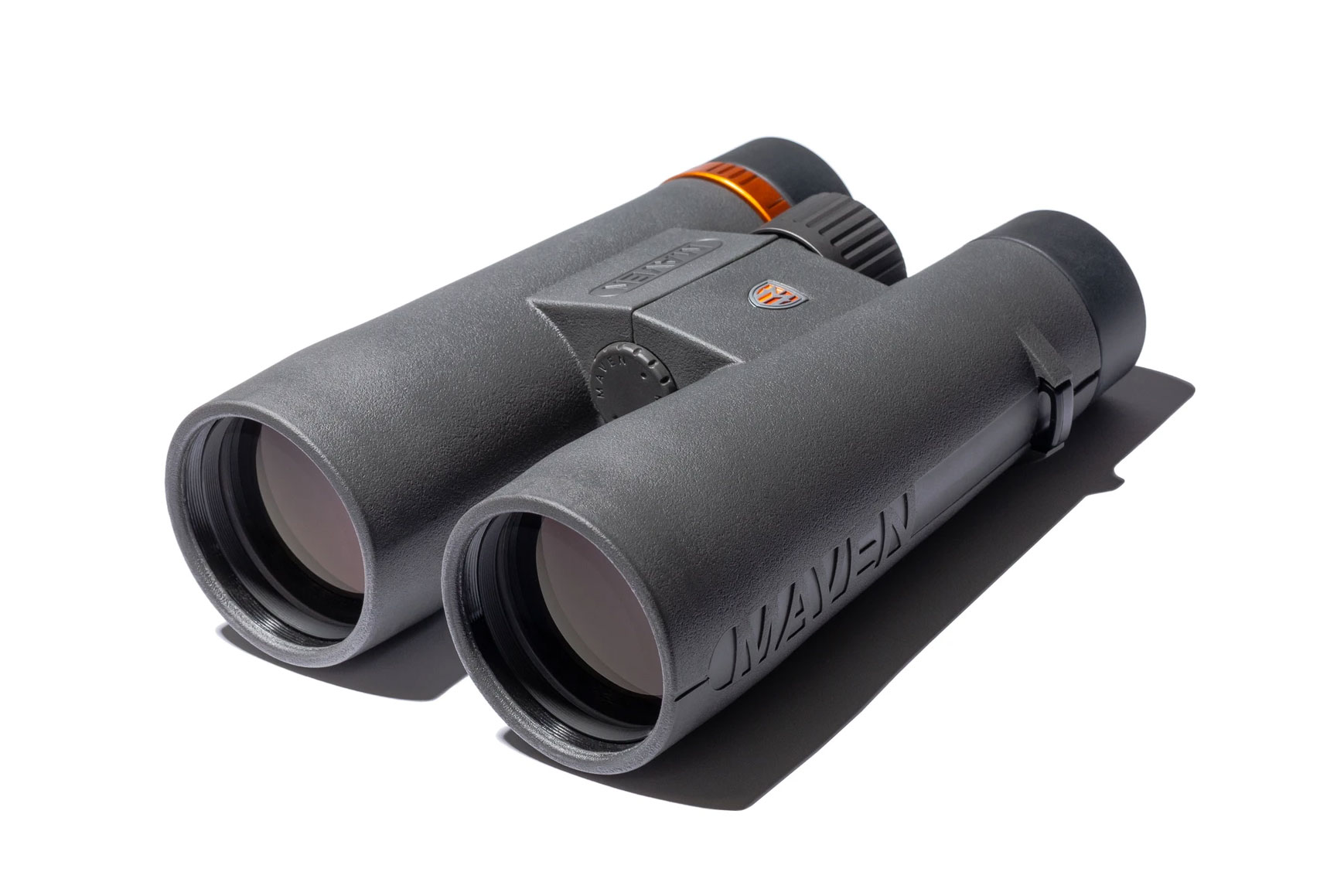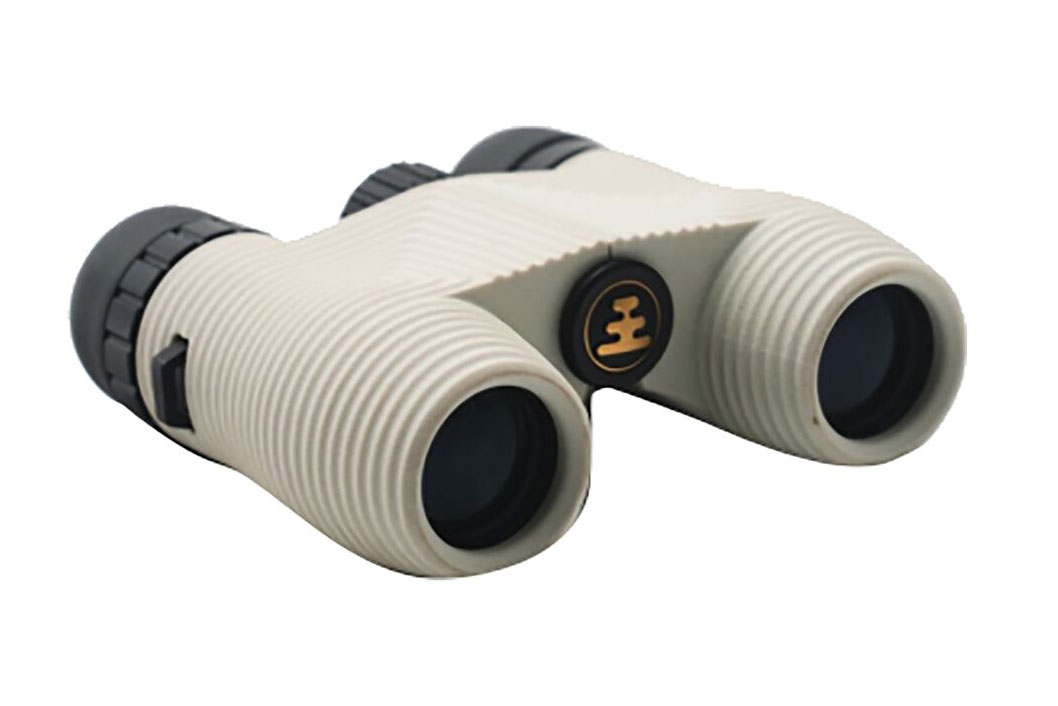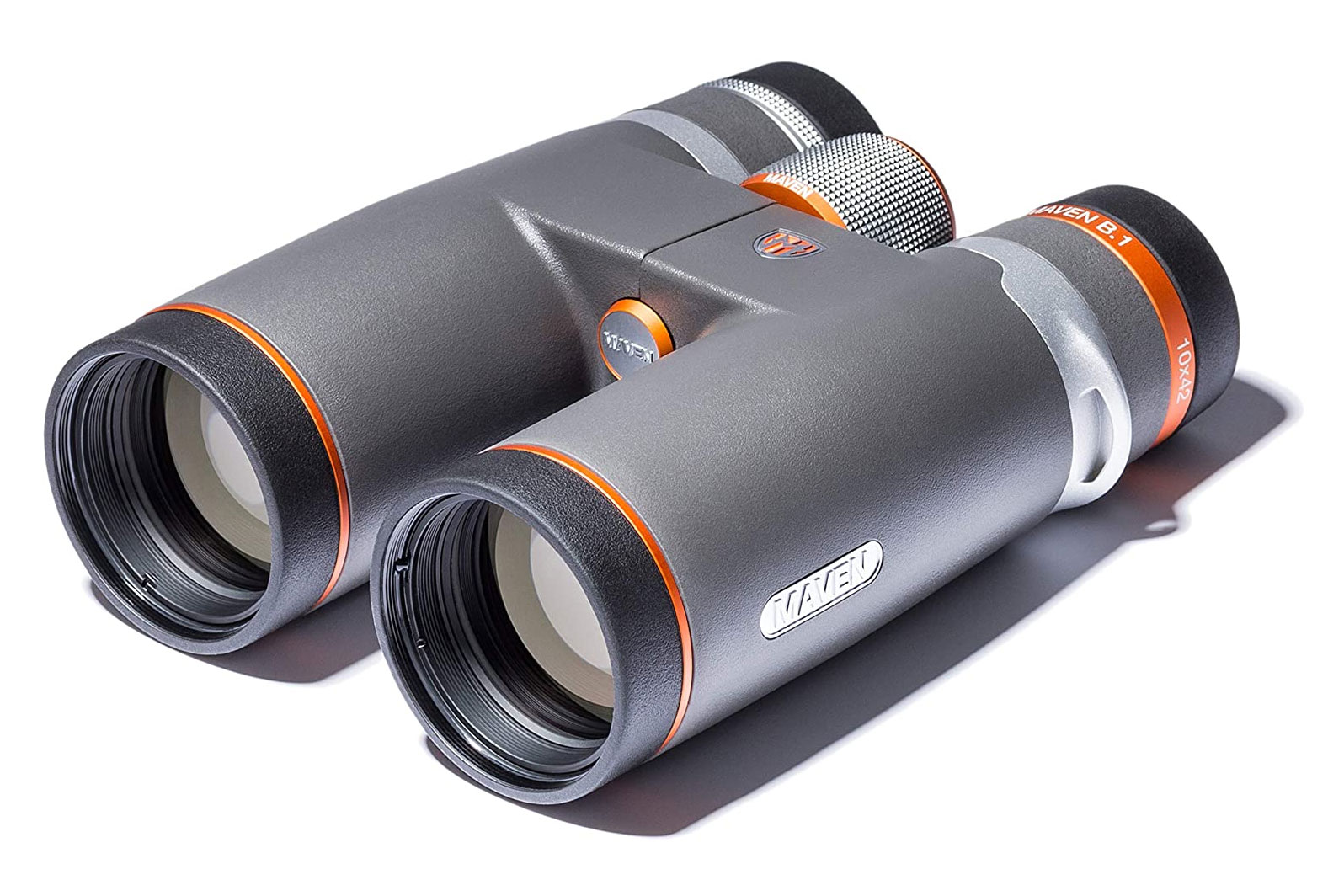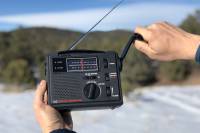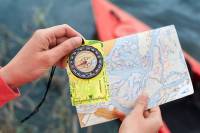The Best Binoculars of 2021
Whether birdwatching, route-finding, or hunting, you need the best binoculars to optimize your time spent outdoors.
More and more people are venturing into the outdoors to explore the parks, natural spaces, and grand landscapes that make this world so special.
And the more time you spend exploring the great outdoors — whether that be sweeping national parks or the dedicated green space in your neighborhood — the more you’ll notice the interconnectedness and beauty of the environment around you.
There are many ways to appreciate the natural world and many tools to help you do it, but perhaps no piece of equipment is as rewarding and versatile as a good pair of binoculars.
To help you decide on the best pair of binoculars for you, our roundup of the best binoculars of 2021 has something for everyone. Even if you can’t find the perfect pair of binoculars on our list below, our buyer’s guide and FAQ section at the end of this article includes all you need to know when buying your next pair of binoculars.
You can scroll through to see all of our recommended buys, or jump to the category you’re looking for here:
- Best Overall
- Runner-Up
- Best Budget
- Runner-Up Budget
- Best for Stargazing
- Best for Birdwatching
- Best for Hunting
- Best Compact Binoculars
- Best for Kids
- Best Premium Binoculars
The Best Binoculars of 2021
Best Overall: Celestron Trailseeker 8×42
With so many different optics on the market, it would be difficult to choose the best overall pair of binoculars. Many brands offer excellent binoculars, but Celestron hit the jackpot with its Trailseeker 8×42 model ($250).
The world’s best telescope brand is now making field optics. And all the quality and reliability of its night sky equipment has transferred seamlessly into an unbeatable line of binoculars. With 8x magnification, the Trailseekers allow for excellent focus at a distance and higher magnification without compromising the overall field of view or creating a shaky viewing experience.
If your subject matter happens to be much closer to you, the Celestron Trailseeker can perfectly address that need as well. The 6.5-foot closeup focus allows users to take in the finest details of their subjects when already near them.
BaK-4 prisms are found inside these binoculars and are designed to capture the optimal amount of light to create a strong contrast, bright images, and one of the best viewing experiences on the market.
As far as usability goes, the Trailseekers are both lightweight and durable — a welcome combination when bringing these tools into the field. While we have no questions on the strength of these binos, Celestron does offer a limited lifetime warranty if something unexpected were to impact their usability.
- Weight: 1.45 lbs.
- Close focus range: 6.5′
- Pros: State-of-the-art optics for optimal viewing, excellent balance of price and quality, ergonomically designed for comfortable use
- Cons: Need to cover some cost of repair, even under warranty; focus dial can become weak or rust if not cared for properly
Runner-Up: Vortex Diamondback HD 8×42
The Diamondback HD binoculars by Vortex ($229) are technically our choice for runner-up, but these optics can hold a candle to any other pair of binoculars on the market.
Users should always prioritize lens quality when buying a pair of binoculars. In this category, Vortex is especially hard to beat. The brand’s patented HD optics are designed to give the ultimate viewing experience in terms of resolution, sharpness, light capture, and color fidelity. No matter the light conditions, the Diamondback HD 8×42 binoculars guarantee excellent visibility.
Further, binoculars are often tossed in backpacks or exposed to the elements on the trail. Vortex recognizes this and has protected its Diamondback HD lenses with ArmorTek to shield them from grime, dirt, oil, scratches, and anything else that could compromise the viewing experience.
Beyond the optics themselves, the build of the Diamondback HD binos is tough to beat. At their core, these binoculars are both light and durable, and the outer rubber coating adds an extra layer of protection and grip-ability.
Vortex excels in the accessory department, as the Diamondbacks are compatible with both car window mounts and tripod adaptors to help steady the optics when viewing. Like many other binos on our list, Vortex packages its binoculars with a neck strap, lens covers, and a protective case and harness.
- Weight: 1.33 lbs.
- Close focus range: 5′
- Pros: Incredible value for the quality of optics, great viewing, excels in low light, excellent warranty and customer service
- Cons: Focus wheel and right eye diopter a bit clunky, included harness is not the easiest to use
Check Price at AmazonCheck Price at Bass Pro
Best Budget: Nikon Prostaff 3S 8×42
There’s a certain financial burden to entry for any set of optics, and Nikon has sought to address this with its affordable Prostaff 3S binoculars ($130). To be expected, achieving a buyer-friendly price point slightly compromises the optics’ overall quality. However, this is combated by a company like Nikon tackling the challenge.
The Prostaff 3S binoculars are built to last and can stand up to the most demanding hikes and adventures both on and off trail. The strong rubber outer is comfortable to hold while in use and provides an added layer of protection. The small profile of these binoculars makes them easy to throw into a daypack, and the optics themselves are strong enough that you’ll be glad you did.
The lenses are manufactured with Eco-Glass, meaning they are free of both lead and arsenic, and the design lends itself to excellent light capture for a bright image display. Further, Nikon has applied a silver-alloy coating on the internal mirror prisms to create a crystal-clear view.
Compared to other optics on our list, the Nikon Prostaff 3S binoculars have exceptional eye relief, making them an excellent option for those who wear glasses. So if you’re budget-conscious but still want a quality pair of optics from a reputable company, look no further than the Nikon Prostaff 3S.
- Weight: 1.25 lbs.
- Close focus range: Unknown
- Pros: Highly affordable, lightweight and durable design, good eye relief, surprisingly nice clarity
- Cons: Some vision distortion along edges of the field of view, ill-fitting lens caps
Check Price at AmazonCheck Price at Walmart
Runner-Up Budget: Celestron Outland 10×42
For a company with its foundation in night sky telescopes, Celestron is making serious noise in the field optics industry. The Celestron Outland binoculars ($88) are certainly not as powerful or high-quality as our top choice, the Celestron Trailseeker, but they come in as runner-up in our budget category.
The Outlands are the most affordable binoculars on our list — besides the Obuby Real Binocs for kids ($26) — and provide a strong viewing experience.
The same optics that can be found in the Trailseekers (the BaK-4 prisms) are in the Outland binoculars. These provide excellent light capture, high-resolution images, and a strong enough contrast to work in all light conditions.
Despite being so affordable, Celestron doesn’t skimp on construction here, as the Outland binos are strong and durable enough to handle being thrown and pulled out of backpacks. The adjustment dials and focus knobs are large and easy to use, plus the eye relief and eyecups provide viewing comfort for everybody.
While these no-frills binoculars may not be the fanciest option on the market, they certainly serve their purpose and provide a surprisingly strong viewing experience.
Whether you’re venturing into the world of field optics for the first time or need to purchase multiple pairs for a family outing or outdoor program, consider the Celestron Outlands to strike a good balance between quality and affordability.
- Weight: 2 lbs.
- Close focus range: 14.8′
- Pros: Most affordable adult binoculars on our list, durable design, good option for bulk purchase or outfitting an outdoor program
- Cons: Touchy adjustment knob sometimes gets itself out of focus, binos don’t hold up well in wet and rainy conditions
Best for Stargazing: Celestron SkyMaster
As you become more familiar with field optic tools, you quickly realize there’s a piece of equipment for every occasion. While most binoculars can address every need decently well, some are built with a specific purpose in mind.
If you have a particular interest in viewing the night sky but can’t afford a full-blown telescope, why not turn to a company that has built itself on night sky optics? The Celestron SkyMasters ($94) are our top choice for stargazing binoculars.
With an especially large objective lens (70 mm!) and a 15x magnitude, these binoculars are designed for exploring the night sky. Given these dimensions, they handle this job incredibly well but aren’t a great crossover choice for other field uses. Because of the large magnitude, the SkyMasters can be incredibly shaky if not mounted on a tripod.
The larger objective lens captures more light and provides a larger field of view when staring into space. Because of the bigger aperture, these binoculars capture a ton of light in the evening or nighttime hours, bringing the stars and planets to life. While durable, these binoculars are best used in a stationary place when mounted to a tripod.
Still, if your goal is to focus on the night sky and explore space from the safety of your home, you’ll be hardpressed to find a pair of binoculars better and more affordable than the Celestron SkyMaster.
- Weight: 3.28 lbs.
- Close focus range: 43′
- Pros: Affordable night sky alternative to a telescope, large magnification, objective lens low-light viewing, reliable brand
- Cons: Specialty binoculars that don’t offer great crossover potential, finicky adjustments
Best Binoculars for Birdwatching: Vortex Viper HD 10×42
Every serious birdwatcher has a personal preference for the best binoculars for birding. However, most would agree that the ideal pair should have magnification in the 8x-10x range to spot birds at a distance while still maintaining a relatively stable hand.
Further, binoculars with objective lenses in the x42 range let in adequate light while promoting contrast in the field of view.
If you can find a pair of binoculars that also has a short focus to enable easy observation of the many intricate and beautiful details of avian anatomy, then you’ve found the perfect pair. We can save you some trouble and recommend the Viper HD 10×42 binoculars by Vortex ($499).
The simple and elegant design is both durable and light, making them a no-brainer to bring on every birdwatching adventure.
The HD glass allows for incredible crispness in the field of view and maximizes light capture in low light conditions. The rubber coating has become a staple of the Vortex line and provides added strength and grip on the Vipers as well, and the adjustable eyecups promote comfort for everybody.
- Weight: 1.54 lbs.
- Close focus range: 5.1′
- Pros: Close focus for birding, optical technology, simple and elegant design, industry-best warranty
- Cons: Wear down with heavy use, expensive
Check Price at AmazonCheck Price at Cabela’s
Best Binoculars for Hunting: Maven C.3
Like birdwatchers, every hunter has a preference for the best binoculars for hunting. That said, Maven has long been an industry leader for hunting-specific optics, and the Maven C.3 line ($425) is one of the best.
The model comes in 10×50 and 12×50 varieties, both of which are optimized for long-distance viewing and scouting. At either the 10x or 12x magnification, hunters can enjoy crystal-clear viewing from a considerable distance away.
Further, the 50mm objective lens allows for significant light capture. This becomes increasingly critical when hunting at dawn and dusk — when many game animals are most active.
While this falls into Maven’s midrange optics category, you wouldn’t know it by looking through them. Given the extra-low-dispersion (ED) glass and multicoated lenses, users enjoy a clear and crisp field of view that’s also well-protected from the elements.
From a durability standpoint, the C.3 line is one of its size’s lightest binoculars and with its optical potential. This is crucial when hauling a lot of gear deep into the backcountry for more demanding hunting expeditions.
Every hunter has their own opinion when it comes to the perfect pair of hunting binoculars, but no one will doubt your choice if you settle on the Maven C.3 line.
- Weight: 1.75 lbs.
- Close focus range: N/A
- Pros: High-contrast image quality, easily adjustable focus wheel, durable design, excellent value
- Cons: More expensive than other options, narrow field of view
Check Price at AmazonCheck Price at Maven
Best Compact Binoculars: Nocs Provisions
Everyone wants the highest-quality binoculars with the best optics technology available. Still, the best binoculars are the ones you have available at the precise minute you need them. Wildlife is fleeting, and you never know when binoculars will come in handy. Cue the Nocs Provisions ($89), our choice for the best compact binoculars.
Measuring 4.5 x 4.25 inches and weighing under one pound, the Nocs Provisions are built to bring on every adventure. The optic measurement on these isn’t the strongest — 8×25 — but for binoculars of this size, they pack a punch.
The BaK-4 prisms create a crisp and clear image despite the size. The 25mm objective lens is big enough to capture light in most conditions, though larger binoculars are certainly better suited for this purpose.
What sets the Nocs Provisions apart from other compact binoculars is a handful of unique features. For one, these are the most waterproof binoculars on our list. They can be submerged for up to 30 minutes in a meter of water and be recovered to work just fine.
Additionally, the eyepieces are designed with smartphones in mind. That is to say that, with a steady hand, you can shoot photos with your phone through these binoculars.
Coupled with impressive durability and a sleek design that is comfortable to handle, choosing the Nocs Provisions as our best compact binoculars was a no-brainer.
- Weight: 0.75 lbs.
- Close focus range: N/A
- Pros: Compact without compromising optic power, durable/waterproof construction, lifetime warranty
- Cons: Expensive for optical power — paying for size
Best Binoculars for Kids: Obuby Real Binocs for Kids
As technology continues to creep into our lives, helping children forge meaningful connections with nature has never been more important. There are many ways to do this, and buying a child a pair of binoculars is a great way to build excitement.
When it comes to binoculars for kids, you don’t necessarily need the most powerful optics. Instead, you need a colorful, fun, compact, light, and easy-to-use option. That’s where the Obuby Real Binocs for kids ($26) come into play.
These binos are great for kids as young as 3 years old and come in various colors to help you customize a pair for your little one. The Obuby Real Binocs were specifically designed for kids, and there’s soft rubber around the eyes to prevent any accidents.
The binoculars’ body has been crafted with smaller hands in mind, meaning kids can use these as effectively as an adult can use their own. Further, these binos were created with an added level of rubber on the outside to combat the inevitable bangs and drops that come when giving a child the responsibility of holding onto a usually delicate piece of equipment.
While the Obuby Real Binocs’ construction is impressive, they also boast a pretty solid viewing experience for kids. The high resolution that results from the 8×22 optics is more than enough to help children gain a little added appreciation for the natural world beyond their scope of vision.
- Weight: 0.37 lbs.
- Close focus range: N/A
- Pros: Fun colors/designs, can handle wear and tear, strong enough optics to enhance nature observation for children
- Cons: Not the most durable lenses, challenging to adjust for younger children
Check Price at AmazonCheck Price at Walmart
Best Premium Binoculars: Maven B.1
If you’re in the market for a pair of premium binoculars, it’s best to trust a company with a longstanding reputation for high-quality optics with a strong warranty. The Maven B.1s ($950) come in 8×42 and 10×42 options and are designed with the durable construction and premium internal optics Maven is known for.
Maven considers the B.1 its flagship binocular. And it easily lives up to this title, as it’s an excellent optic for virtually all uses. The internal elements can handle all light conditions and provide as good a viewing experience in the middle of the day as they do in the low-light morning and evening hours.
Some binoculars struggle with providing clarity across an entire field of view, with edges sometimes becoming blurred. That’s not the case with the Maven B.1s. When in use, the entire field of view is crystal clear, with excellent color, contrast, and depth of field.
If compared to midlevel binoculars, the Mavens provide a noticeably stronger visual experience. Compared to other premium binoculars, the optical difference is negligible, but the Mavens’ price tag is much more attractive. The focus dials are smooth and easy to use, and the overall construction is built to last.
It’s no surprise that the Maven B.1s have won the Adventure Gear of the Year award from National Geographic. These truly are a top-of-the-line field optic that can stand up next to the market’s most expensive competitors. When coupled with Maven’s unconditional lifetime warranty, the Maven B.1s were easy to choose as our favorite premium binoculars.
- Weight: 1.86 lbs.
- Close focus range: 6.6′
- Pros: Best visual experience, not as expensive as other high-end competitors, lifetime warranty, durable design, comfortable to handle
- Cons: Expensive for casual users
Check Price at AmazonCheck Price at Maven
Buyer’s Guide: How to Choose Binoculars
While similar in appearance, each pair of binoculars is unique. There are many different features and measurements to consider when trying to find the best binoculars for you. By working through our list and prioritizing your needs, finding the perfect binoculars will be easy.
Field of View
Field of view is a critical piece to consider when buying binoculars. The field-of-view measurement denotes the width you’ll be viewing through your lenses.
A wide field of view offers users the opportunity to see more of an area, whereas a smaller field of view is more zoomed into a smaller geographical space. The relationship between objective lenses and magnification and binocular design, in general, plays into the field-of-view measurement.
Field of view is presented in either feet or degrees. Most high-quality binoculars have a field of view between 6 and 8 degrees, or 300-400 feet, when viewing a spot 1,000 yards away.
If you wear glasses, it should be noted that binoculars with a wide field of view often have shorter relief and may not be the best choice.
Prisms
Binoculars can generally be broken into two subcategories: Porro prism and roof prism.
Without diving too far into each technology, Porro prism binoculars typically have a wider field of view with better depth perception and more contrast. Their design, however, is much more complex and expensive to manufacture.
Roof prism binoculars are a more comfortable shape to handle, with lenses and prisms aligned inside the binoculars themselves. Because roof prisms have a more straightforward design, they are more affordable. The technology has come a long way in recent years, and they have become the choice style of binocular for many wildlife-watchers.
That said, many Porro prism binoculars are higher-performance when compared to roof prism alternatives at a similar price point.
Eye Relief
Eye relief is significant to consider for those who wear eyeglasses. The distance you should have your eye away from the eyepiece when using your binoculars is referred to as “eye relief.” Eyeglass-wearers should seek out binoculars with an eye relief measurement long enough to accommodate their glasses.
If you don’t wear glasses but found the perfect pair of binoculars that happen to have a long eye relief, don’t fret! Most binoculars have extendable rubber-coated eyecups. This serves as a correction and makes binoculars usable for both those with and without glasses.
Close Focus Range
Virtually all makes and models of binoculars prioritize focusing on objects in the distance. However, all binoculars are also capable of focusing on items much closer.
The close focus range on a pair of binoculars is the measurement given to the closest distance that a specific pair of binoculars can focus. This distance enables users to examine intricate details of nearby objects. This distance is at least 25 feet for most binoculars. The close focus range of higher-quality binos comes in at under 10 feet.
Packed Size & Weight
Depending on your use, the size and weight could be a key consideration. When you’re hiking and hunting, having the lightest pair possible will make trekking that much more enjoyable. We also like having a small pair handy in the car in case a good animal peeping opportunity arises.

FAQ
What Do the Numbers on Binoculars Mean?
Those new to buying binoculars will notice a few significant numbers while shopping through different options. The magnification power followed by the objective lens diameter is the numbers you see presented as “8×40” or “10×42” and communicate very important bits of information.
Magnification
The first number is the magnification and is relatively easy to understand. This number indicates how many times closer what you’re viewing will appear to you. A set of binoculars with 8x magnification makes objects appear 8x closer. A set of binoculars with 10x magnification makes objects appear 10x closer.
Objective Lens Size
The second number, the objective lens size, is a bit more complicated. At a basic level, the measurement of objective lenses gives you an idea of how bulky the binoculars are to handle.
Perhaps more importantly, this number indicates the length in millimeters across the lens and, in turn, how much light your binoculars let in when viewing. Higher numbers mean larger lenses and more light, resulting in brighter images. Binoculars with smaller objective lenses are smaller and more portable.
Which Is the Best Magnification for Binoculars?
When choosing the magnification for your binoculars, you need to consider how you’ll primarily use them. As an outdoor site, we would recommend everyone to purchase binoculars with a minimum magnification of 7x.
Binoculars with high magnification, such as 10x or greater, are suitable for long-distance viewing and are often the go-to choice for hunters and the most serious birders.
Binoculars with notably smaller magnifications — in the 3x-5x range — can be good compact options for ultralight backcountry use or viewing concerts, theater productions, and sporting events from the nosebleeds.
Which Is Better — 10x42 or 8x42?
Both 10×42 and 8×42 binoculars share a 42mm objective lens. This example, however, provides two binoculars that differ in magnification. One pair has a 10x magnification while the other has an 8x magnification.
As you likely deduced, the 10x magnification binoculars are more powerful than the 8x. This allows you to view objects a bit more clearly and also hone in on more intricate details.
While the 8x magnification lens may not be as powerful, it does offer a more stable viewing experience. This means users can more easily stay focused on their subject matter and need to worry less about maintaining a steady hand.
Both 10×42 and 8×42 binoculars serve their purpose, and one isn’t necessarily better than the other. Ultimately, it’s up to you to decide which magnification will better suit your needs.
Are Compact Binoculars Any Good?
The best binoculars are the ones you’ll actually use. And oftentimes, that means going with a more compact pair. Luckily, you can get a packable pair, without sacrificing too much.
The main thing with compact binoculars is light transmission. It won’t be too much of a problem during the day, but at sunrise and sunset, you may notice the quality of the image decreases.
Bottom line — if you plan to use your binoculars often or for important tasks like hunting or birdwatching, it’s worth investing more and hauling a bigger set. If your use is casual, a compact pair will work great.
What Strength Binoculars Do I Need for Birdwatching?
You can birdwatch with any pair of binoculars, and serious birdwatchers have multiple pairs in their arsenal. At a bare minimum, select a pair of binoculars with at least 8x magnification.
Binoculars of this caliber offer a wide enough field of view to find and follow birds without compromising the magnification needed to identify your avian subject.
If you’re doing most of your birdwatching from a considerable distance, try a pair of binoculars with a 10x magnification. While slightly shakier and generally with a smaller field of view, the larger magnification allows you to focus closely on the bird at hand and observe its most intricate details. As you become more experienced, you’ll likely discover the value of having various binoculars on hand.
Have a favorite pair of binoculars? Let us know in the comments and we’ll check it out for future updates to this article.
The Best Emergency Radios of 2021
From solar-powered to elbow grease, we’ve found the best emergency radios of 2021. Read more…
The Best Compasses of 2021
Whether hiking, traveling, or backpacking, having the best compass available will keep you on track. This review and buyer's guide will ensure you can always find true north. Read more…
The post The Best Binoculars of 2021 appeared first on GearJunkie.







